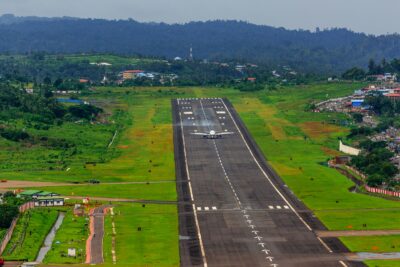How Technology is Transforming Airports into Welcoming Spaces for All
Smart airport solutions are revolutionizing the air travel experience by prioritizing accessibility and inclusivity. These cutting-edge technologies are designed to create a seamless and welcoming environment for all passengers, including those with disabilities. By integrating assistive technology, wayfinding solutions, and sensory-friendly features, smart airport solutions are setting a new standard for accessible air travel.
Wayfinding Assistance for Passengers with Disabilities
One of the key features of smart airport solutions is the implementation of wayfinding assistance for passengers with disabilities. This can include tactile maps, audio cues, and real-time navigation apps that provide step-by-step directions to gates, restrooms, and other key areas within the airport. These solutions empower passengers with visual or mobility impairments to navigate the airport independently, enhancing their overall travel experience.
Sensory-Friendly Environments in Terminal Facilities
Smart airport solutions are also focused on creating sensory-friendly environments in terminal facilities. This involves minimizing noise levels, reducing harsh lighting, and providing designated quiet areas where passengers can de-stress and relax. Sensory-friendly environments are particularly beneficial for individuals with autism or sensory processing disorders, as they create a more calming and comfortable atmosphere for all travelers.
Assistive Technology for a Seamless Travel Experience
Assistive technology plays a crucial role in smart airport solutions, enabling passengers with disabilities to access information and services more easily. This can include hearing loops for individuals with hearing impairments, screen readers for those with visual impairments, and accessible kiosks that cater to a wide range of needs. By incorporating assistive technology throughout the airport, smart solutions ensure that all passengers have equal access to the information and resources they need.
Disability-Inclusive Design in Airport Infrastructure
Universal Design Principles
Smart airport solutions prioritize disability-inclusive design in airport infrastructure, incorporating universal design principles to create a barrier-free environment. This involves designing ramps, elevators, and restrooms that are accessible to individuals with mobility impairments, as well as providing clear signage and wide pathways to accommodate wheelchairs and other assistive devices. By adhering to universal design principles, smart airports ensure that all passengers can move freely and independently throughout the terminal.
The Future of Accessible Air Travel
Smart airport solutions are not only transforming the present but also shaping the future of accessible air travel. As technology continues to advance, we can expect even more innovative solutions that cater to the diverse needs of all passengers. From AI-powered chatbots that provide personalized assistance to biometric identification systems that streamline security processes, the possibilities are endless. By embracing smart solutions, airports can create a truly inclusive and accessible travel experience for everyone.
Embracing Innovation for a More Inclusive Future
The implementation of smart airport solutions is a testament to the aviation industry’s commitment to accessibility and inclusivity. By embracing innovative technologies, airports are transforming themselves into welcoming spaces for all travelers, regardless of their abilities. As we move forward, it is crucial to continue investing in smart solutions that prioritize the needs of passengers with disabilities. By doing so, we can create a more inclusive and accessible future for air travel.
Training and Awareness for Airport Staff
In addition to technological advancements, smart airport solutions also emphasize the importance of training and awareness for airport staff. By providing comprehensive training programs on disability awareness and inclusive customer service, airports can ensure that their staff are equipped to assist passengers with disabilities effectively and empathetically. This includes understanding the diverse needs of different disabilities, communicating effectively, and providing appropriate assistance throughout the travel journey.
Collaboration and Partnerships for Enhanced Accessibility
Smart airport solutions are often developed and implemented through collaboration and partnerships between airports, technology providers, disability advocacy groups, and other stakeholders. By working together, these entities can leverage their expertise and resources to create more comprehensive and effective solutions that address the specific needs of passengers with disabilities. Collaboration also fosters a culture of inclusivity within the aviation industry, ensuring that accessibility remains a top priority.
Measuring Impact and Continuous Improvement
To ensure the effectiveness of smart airport solutions, it is crucial to measure their impact and continuously improve upon them. This involves collecting feedback from passengers with disabilities, tracking key performance indicators related to accessibility, and regularly evaluating the effectiveness of existing solutions. By adopting a data-driven approach, airports can identify areas for improvement and implement necessary changes to enhance the overall accessibility of their facilities and services.
#smartairports #accessibility #inclusivity #airtravel #wayfindingassistance #sensoryfriendlyenvironments #disabilityinclusivedesign #assistivetechnology #accessibleterminals #barrierfreetravel #universaldesign























